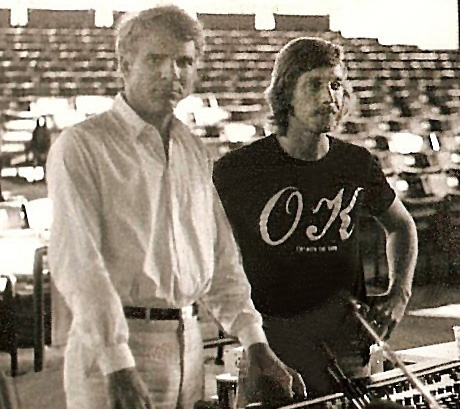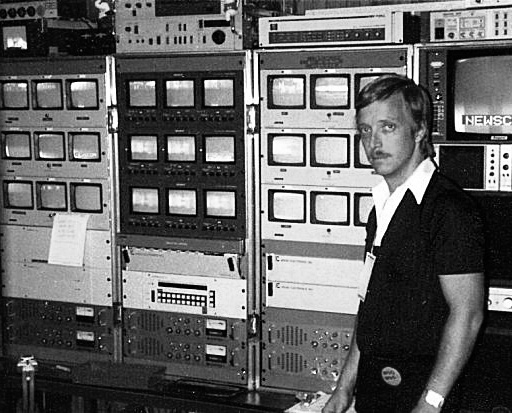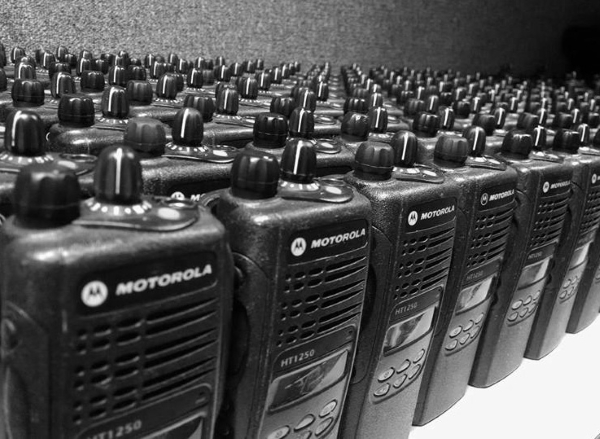
Shifting Focus
In 1981, 3rd Street took what Carttar terms “a little adventure” into satellite teleconferencing, networking and broadcast video as a means of generating income when tours weren’t running.
The company went on to provide services to most of the major satellite teleconferencing companies of the time and branched out beyond the music industry, operating Videostar’s Toll Operations Center during the 1984 Republican Convention in Dallas, and in 1983-1985, providing support for a Joint Middle East Exercise that included multiple branches of the U.S. armed services.
The latter was an effort to streamline logistics in a hypothetical Middle Eastern conflict by way of enhanced AV communications over an encrypted satellite conferencing network. Ultimately it led to expansion into large-scale special events communications, which would become, alongside live production, a primary focus for the company.

Despite his company’s growth, however, there were rough patches, Carttar adds, such as when, in 1990, a road-weary Cash made a deal to move into a theater in Branson, MO. Cash tapped 3rd Street to provide technical support and Carttar, seeing no point in commuting from Nebraska during what was to be at least a 5-year contract, relocated the company to Branson before the deal was done.
However, the theater construction project soon went bankrupt, catching both Carttar and the Cash organization by surprise. It was right at the end of a lengthy tour by The Statler Brothers, he says, admitting his company was caught somewhat flat-footed at the time by the emergence of line arrays, digital consoles and in-ear monitoring. Owing to the disappearance of a major source of long-term income, it wasn’t easy to catch up.
“We were expecting the Cash theater gig to be our next major piece of cash flow,” he says. “So there we sat, two families and another guy from Kansas City moved down here, and John [Cash] was off the road, but that’s when the radio thing took on a life of it’s own.”
The “radio thing” as he puts it, was an initiative that might have seemed like a change of direction, but it actually had a long gestation period. It proved to be an innovation rooted in Carttar’s dealing with communications systems while working with his father, informed by his experiences on tour with RF comm systems and techniques, and driven by both necessity and the frustration of trying to meet the need for speed, reliability and flexibility in a concert setting with the technology of the time.

“When we were doing the Statlers we used walkies [walkie-talkie portable radios] – a lot of people did,” he explains. “But big festivals and fairs were always a mess. Everybody had radios but nobody could talk to each other, and so building on my communications background, I designed a standardized channel plan for large events. It was something I already knew how to do, largely, so away we went with it.”
Making Connections
It was an extension of what the company was already doing, Carttar continues, and one that became a flexible operational communications plan for multiple applications. He implemented the plan at Colorado’s Telluride Bluegrass Festival, which led to ongoing work with the Telluride Jazz Festival and 25 years with the Telluride Film Festival, as well as 17 years with The Sundance Film Festival and various public safety applications.
The plan ultimately became 3rd Street’s “Mother” environment – a mediated, assistive communications solution. “It involves Public Safety-Grade [PSG] hardware, techniques to break an event down into functional groups so we can assign radio channels, and monitoring all those channels to get resources moving in anticipation of what’s developing before it’s even developed,” he explains.
The name of the plan is apt, given that it allows watching over everyone working an event or production and monitoring radio traffic to facilitate the progression of events, just as a mother might do. “But the reason we actually called it Mother is because nobody yells at their mother,” Carttar says. “If someone’s calling Mother, they need help.”
Mother has since been used for a variety of applications. Notably, in 2004, in multiple Defense Advanced Research Projects Agency (DARPA) Robotic Vehicle Challenges, which encourage innovation in human-supervised robotics for battlefield logistics.
“Those were very large projects,” Carttar adds. “2004 involved something like 10,000-square-miles of radio coverage. But I don’t know if that was changing direction or just taking advantage of an opportunity. Sometimes it’s just, ‘We’re going to have trouble moving forward, so let’s find something to fill time and make money.’ There was definitely some of that involved, but these opportunities are also things maybe other people just hadn’t thought of doing.”
In Branson, 3rd Street also grew by serving theater customers, providing system support and maintenance, equipment rentals and working on Branson-based TV specials, including Wayne Newton’s Flood Relief Telethon and Feed The Children.
